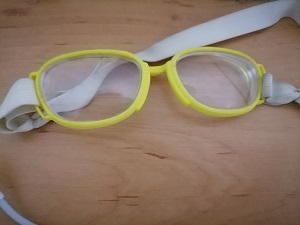Digital Foragers
The tribe roamed through the jungle on their electric hover carts. Not that it was a regular tribe, but rather a branch of the mega-tribe that had evolved over the past few thousand years. Still, people called each branch a tribe, understanding what was meant through context.
Wireless messages through their headsets launched a well-coordinated attack, as their chemical dispensers unleashed a lethal dose of insecticide that nearly instantaneously covered the entire square kilometer of jungle where they were operating.
Insects fell out of trees and vines. The jungle floor suddenly seemed to stop moving. The toxin paralyzed the insects' nervous systems. Some of the tribespeople suspected that the toxin wasn't so innocuous on humans, but this was the tool of their trade.
Zalrog whispered over to his companion, Revestra: "Looks like we'll have a surplus we can sell on the e-markets." She winked back at him. They'd developed a tight relationship, which intermingled business and sex as tribal relations so often did.
The tribe didn't have a "home", of course. They were nomadic, as practically all humans were, and always had been. Not having undergone an agricultural transition, they retained many of their hunter-gatherer ways while also incorporating modern manufacturing and digital practices.
Instead of a home, they would set up camp every night near their latest hunt, or en route to their next hunt. Thousands of years back, after having undergone a transition to more efficient weapons manufacturing, humans had rapidly wiped out many of the megafauna. Then, they killed off the medium-sized mammals through overhunting, as well as all birds of any measurable size. The skies were empty.
The people's stomachs were empty, too, so they turned to ever smaller yet more abundant game. Rodents became common fodder. Then people turned to insects. Or returned to insects, rather, as humans had long ago eaten insects for subsistence.
Modern humans found insects disgusting to eat, after having hunted big game. So they turned their inventive genius to making the insects taste better. In no time the modern humans had developed thousands of flavorings and preparation methods to make the insects taste appealing. Recipes spread like wildfire over the net.
Developments[edit]
Without having undergone the agricultural transition, people remained quite beefy and well-fed, even into the insect-eating days. In another timeline, agriculture slashed the nutrition available to each human, even in comparison to ancient hunter-gatherer practices. No agriculture, no diseases of deficiency.
Going straight from hunting and gathering to industrial then digital technology enabled the people to develop larger bodies and brains. The average individual in Zalrog and Revestra's tribe was well over seven feet tall, for instance.
Without having had an agricultural phase, humans also lacked much of the centralized politics and religion that had resulted in so much warfare in other timelines. Instead, digital forager humans had retained their tribal politics and religion, which had produced no shortage of their own warfare. In modern digital foragers, millions of cultures merged into an ever-flowing global melange. Instead of centralized bureaucracies, they had free-flowing pluralistic societies — still with conflict.
Beginnings[edit]
The early stages of technology like stone tools had already happened in ancient hunter-gatherer times. Even before then, in other animals like gorillas and chimps. From those small starts, it was practically inevitable that animals would develop digital technology. It turned out that agriculture wasn't some necessary precondition for industrial and digital economies, but just a happenstance way station.
When humans went directly from foraging to modern technology without agriculture, they invented small portable tools to turn sticks and stones into guns and bombs. Basically the same processes as in post-agricultural timelines, but using less fixed hardware and more locally available resources.
As the people walked around — through the jungle, the forest, the tundra, or any other environment where humans could now go — they would process local materials into their weaponry as well as into their clothing and other needs.
When the digital revolution came around, of course, the digital foragers skipped over desktops and laptops and server centers, going straight to mobile devices. They would sometimes install a hardened server setup in a frequently traveled area, but for the most part they used mesh networking.


